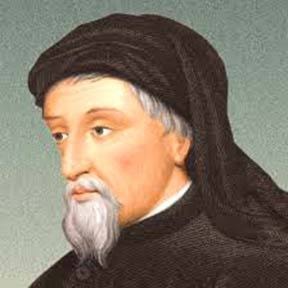Mike Selby
Thomas Arundel was having none of it.
The 14th-century Archbishop of Canterbury was sick and tired of people accusing the church of being made up of nothing more than fat, rich, power-hungry hypocrites.
Having aided (some say masterminded) Henry IV's overthrow of Richard II, Arundel — himself a fat, rich, power-hungry hypocrite — was now in a position to end criticism of the church. Mass arrests, torture, and being burnt at the stake became the new norm under Arundel, who sought to silence anyone from even thinking the church was corrupt.
Enter Geoffrey Chaucer. This son of a London wine seller had a most unusual career path which included that of a pageboy, a knight's squire, a royal attendant, diplomat, civil servant, spy, prisoner of war, and finally poet. His best known works were his elegy for John of Gaunt's first wife titled 'The Book of the Duchess,' and 'Troilus & Criseyde' — the first occurrence of iambic pentameter in the English language.
Yet it is Chaucer's 'The Canterbury Tales' which completely overshadows not only his own works, but the entire cannon of English literature. "English" is the key word here, because England had been speaking and writing in French since the Norman invasion of 1066 (with Latin still being used by scholars and the church). Chaucer's work halted this practice in its tracks.
Like any good story, 'The Canterbury Tales' begins in an English pub. Here a variety of characters from all walks of life embark on a journey to visit Thomas Becket's shrine in Canterbury. To help kill time on the journey, each character will tell a story. These stories make up the famous chapters of the work, including the familiar titles of 'The Knight's Tale,' 'The Pardoner's Tale,' 'The Nun's Priest's Tale,' and the sexually charged (and for some reason the most popular) 'The Wife of Bath.'
While the occasional tale is one of pious chivalry, most are suggestive, flippant, and satirical, pulling back the curtains and mocking all segments of English society. All segments —including the church.
One can only imagine Archbishop Arundel's stroke-inducing reading of Chaucer's tour de force, as he lambasts the Pardoner who sells fake indulgences to the very poor, the Friar who lives off of bribes, and the drunk and lecherous Summoner. Many have noted that the entire work is a swipe at the church.
Unfortunately, no one knows Arundel's reaction to Chaucer. While expert at burning heretics, Chaucer was a seasoned war veteran connected to the court, and may have not been so easily dealt with.
Six hundred years later, in 2003, a theory surfaced that Arundel actually had Chaucer murdered. This theory was unusual as it wasn't based on what was in the historical record, but on what was not.
Although there are 83 copies of 'The Canterbury Tales' in existence, many of them are only fragments. None of them are the original.
Also missing from the record is any mention of Chaucer's death. His tomb states he died in October of 1400, but this wasn't engraved until the 16th century. And in his 1410 poem "Regiment of Princes,' poet Thomas Hoccleve discusses how a "subversive Chaucer" was "slaughtered" and "quenched."
Whether this is proof of a murder or not remains unknown.
What we do know is that Chaucer's work remains as relevant now as it did in medieval times (a recent Edinburgh journal chimed, "All the cool kids want to read Chaucer.") While poor Thomas Arundel was nominated "the Worst Briton of the 15th Century" by the BBC.
Mike Selby is Reference Librarian at the Cranbrook Public Library
